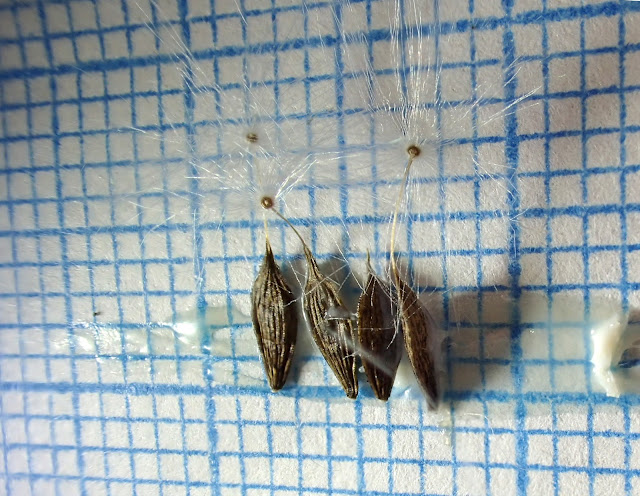Loreleia postii A fungus growing in association with a liverwort.
In 2017 on 28 October Craven Conservation Group went on a walk led by Archie McAdam (See the post written then) . As Doris and I (last) walked down the steep footpath beside the road from Giggleswick Chapel down to the Giggleswick Carpark we discovered a very few tiny orange fungi which Archie (after consultation with Roy Watkins) eventually told us were Loreleia postii - A fungus that gets its food from liverworts.
It is similar to another one called Loreleia marchantiae (The Liverwort Navel)
I had been back a couple of years and not found them.
However on 21 Sept (my it's the equinox!) I fancied a walk and some fresh air - and drove to Giggleswick and was pleased to find about 10 tiny orange caps scattered up beside the path. More than last time. SD 8089764002 and SD8092264008
There is much less Marchantia now than there used to be. In 2017 it was more obvious that bare soil had been left when the gravel path had been laid and wooden fence had been erected, and the Marchantia polymorpha had spread over much of this bare soil. By 2022 grass is beginning to creep in. And moss (Didymodon sp?? still to be checked) is more abundant than Marchantia. However the Marchantia is still there, thinly scattered all the way along.
 |
 |
| One large (3mm cap) 1/5 of the way up - near centre, plus three more diagonally above and to the right |
More notes: After this I walked to the good tree next to Mill Hill Lane SD80936419 where I had found fungi in previous years but did not find any. It is too early.
Notes mostly to myself on lichens (SD84)
Then I walked across to Giggleswick Church - At the point where the path is enclosed by two old walls, 15 m from the churchyard perimeter I found this pale pinkish crustose lichen: It was growing on a smooth roundish Sandstone stone in the wall in several places. It was K- and C red. It has soredia
I wonder if it is Trapelia placodioides. I think so.
Oh - I see I saw it with our "lichens for all Group" last month with Allan and Sue and Les on the Gritstone rocks near Craven Bank Lane on 6 Aug
Then I saw it at Harden Gill at Humberstone YNU Day on 14th August. -
Like London Buses - three in a row.
I have entered it on my "List of species in SD 86" - I am up to 170 species
The wall has a "right mixture of stones" - It is lying exactly the fault line anyway!!
This I think is Porpida macrocarpa - well the big black apothecia
 |
| This is Cladonia pyxidata |
 |
| Cladonia pyxidata |
Once in the churchyard I looked for fungi. Although wildlife conservationists ask for parts of the churchyard to be left unmown for the sake of insects and small mammals etc, I am really pleased that parts of it with the old grassland are still kept mown - not because it looks neat and tidy, but because some fungi do better here. I only found three species - but they were all in the mown area. I might put them up later.
 |
| Although this one looks bright and cheerful here, it is actually the Conical wax cap or Blackening wax cap and is one of the very few waxcaps that are inedible. Hygrocybe conica |
 |
| Hygrocybe conica - at NE corner of church |
 |
| Hygrocybe conica |
Two more species at lawn south of the church building that I am thinking about.





























